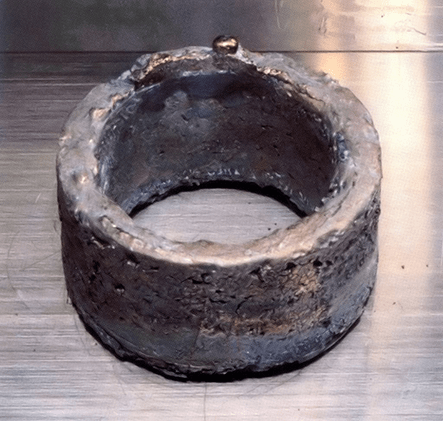Timeline: HTML Version

Dr. Chalmers J. MacKenzie
(1948 - 1961)
1948-03-16
Chalmers Mackenzie appointed AECB President Dr. Chalmers J. Mackenzie becomes President of the Atomic Energy Control Board and serves until October 18, 1961. He was previously President of Atomic Energy of Canada Ltd. and the National Research Council.
1949-01-01

Plutonium isotopes are produced at Chalk River A plutonium recovery laboratory begins operating at Chalk River Laboratories to extract plutonium isotopes from enriched fuels used in research reactors. Chalk River announced that radioactive isotopes would then be available for international distribution.
1949-01-01
Betatron treats first patients in Canada For the first time ever, the betatron is used in clinical trials – on cancer patients in Canada. The betatron delivers high-dose radiation with minimal damage to overlying skin. In 1951, the first beam therapy units are used to treat cancer. (Source: University of Saskatchewan and the Canadian Nuclear Association)
1952-12-12

The Chalk River experimental reactor experiences a partial meltdown The core of the National Research Experimental reactor at Chalk River Laboratories undergoes a partial meltdown. Some tubes in the calandria rupture and cause significant damage that puts the reactor out of service for 14 months. Future U.S. President Jimmy Carter, then a U.S. Navy serviceman, is part of the clean-up crew. (Source: Canadian Nuclear Society)
1954-01-01

Collaboration leads to CANDU reactor technology Collaboration between Atomic Energy of Canada Ltd., Ontario Hydro and Canadian General Electric leads to the development of the CANDU reactor, which is still in use around the world today. (Source: Canadian Nuclear Association)
1954-02-16
The Chalk River experimental reactor resumes operation The National Research Experimental reactor in Chalk River resumes operations. A series of design improvements are put in place to prevent another failure similar to the one that caused the partial meltdown in 1952 and to boost the reactor’s power output from 30 to 40 megawatts.
1955-08-01

Promoting peaceful use of atomic energy The United Nations holds the first International Conference on the Peaceful Use of Atomic Energy in Geneva. A unanimous resolution is adopted to establish an international agency to promote the peaceful uses of atomic energy. (Source: International Atomic Energy Agency)
1956-01-01

Canada and India sign an atomic reactor agreement A commercial version of the National Research Experimental reactor, the Canadian-Indian Reactor Uranium System , is sold to the Indian government with the intent of peaceful use. India eventually uses the reactor to obtain plutonium for a nuclear test known as Operation Smiling Buddha. (Source: Nucleus: The History of Atomic Energy of Canada Limited, Robert Bothwell, pp. 355, 429)
1957-04-01

The AECB authorizes construction of a research reactor at McMaster U The AECB authorizes the construction of a small research reactor at McMaster University in Hamilton, Ontario. This is the first non-government reactor project in Canada.
1957-07-29
Canada is among 26 countries to ratify the International Atomic Energy Agency The International Atomic Energy Agency is established to promote the peaceful use of nuclear energy, and to establish and administer safeguards against the proliferation of nuclear weapons.
1959-01-01

Canada is among 26 countries to ratify the International Atomic Energy Agency The International Atomic Energy Agency is established to promote the peaceful use of nuclear energy, and to establish and administer safeguards against the proliferation of nuclear weapons.
1959-04-10
The McMaster research reactor begins operating The McMaster Nuclear Reactor, located at McMaster University in Hamilton, Ontario, begins operating. The reactor is the first university-based research reactor in the British Commonwealth. (Source: McMaster University)
1960-01-01

Regulations for an evolving nuclear sector Regulatory changes authorize the AECB to establish acceptable levels of radiation exposure for nuclear energy workers and to control their health and safety. The AECB is also authorized to make regulations to encourage and regulate the development of atomic energy in view of the increasing use of radioactive isotopes for industrial, research and medical purposes.
Page details
- Date modified: